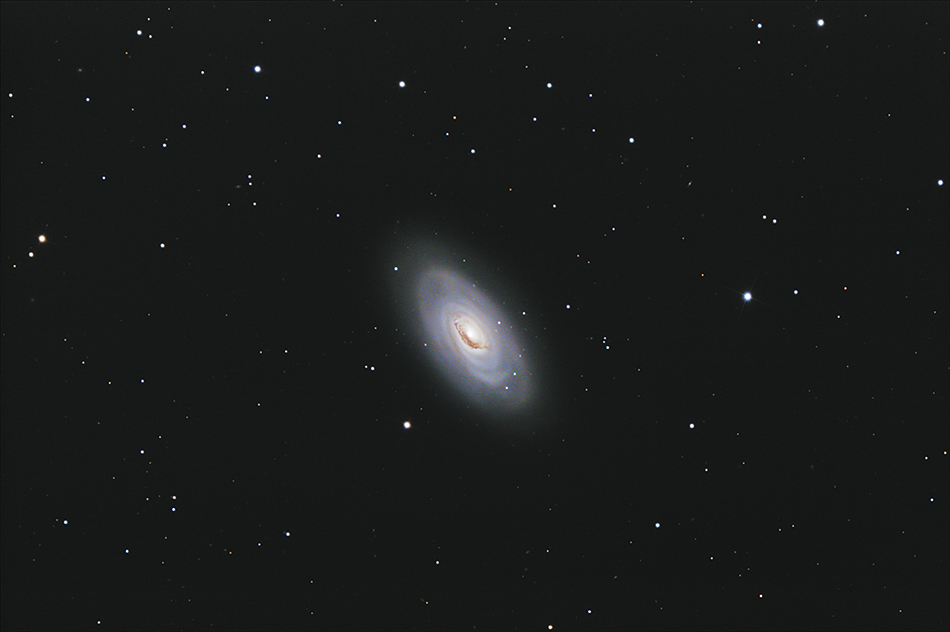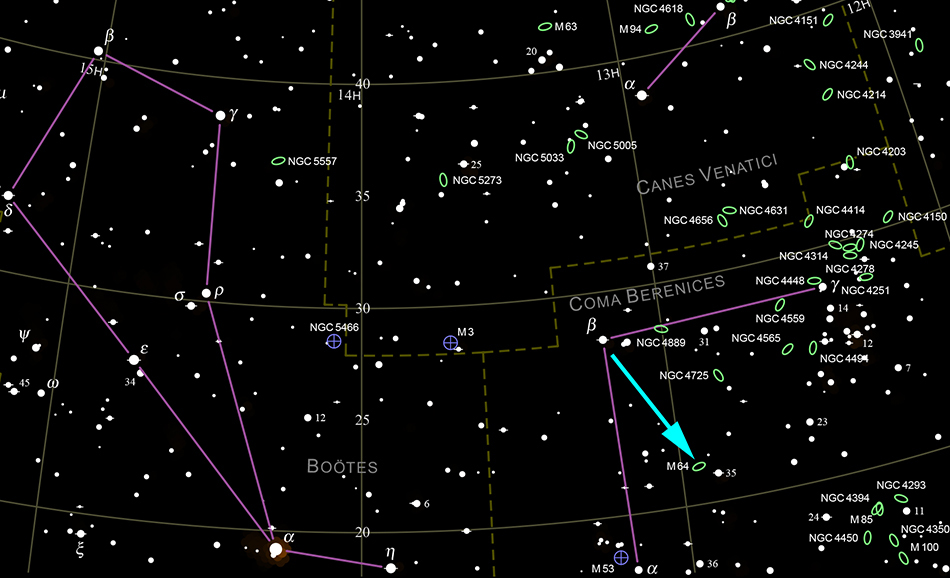

| Object name: | Constellation: | Coordinates: | Apparent size: | Visual brightness: |
|---|---|---|---|---|
| Messier 64 (NGC 4826) | Coma Berenices | 12h57m / +21°41' | 10.0' x 5.4' | 8.5 mag |
The fascinating spiral galaxy Messier 64 (Black Eye Galaxy, Evil Eye Galaxy, NGC 4826) in the constellation Coma Berenices. Messier 64 is a Type II Seyfert Galaxy, showing narrow emission lines in its spectrum. A dark band of absorbing dust in front of the galaxy's bright nucleus gave rise to its nicknames of the "Black Eye" or "Evil Eye" galaxy. A possible formation scenario of the dust cloud is a merger with a small dust-rich galaxy a billion years ago. Messier 64 is about 17-24 million light-years from Earth and was discovered by British astronomer Edward Pigott in 1779 (published two years later), and independently by Johann Elert Bode in the same year, as well as by Charles Messier in 1780 (source: Wikipedia).
Forty 3-minute exposures (120 minutes total exposure) at ISO 800 taken on April 22 / 23, 2020 and on April 23 / 24, 2020 were added for this shot with the DeepSkyStacker software and the final image processing was done in Photoshop.
Equipment: Canon EOS 450D Baader modified camera, TeleVue Paracorr Type II coma corrector, 16" f/4.5 "Ninja" dobsonian telescope riding on a dual-axis Tom Osypowski equatorial platform, Lacerta MGEN autoguider, Lacerta off axis system (field of view comparison: image of the moon with the same equipment).
